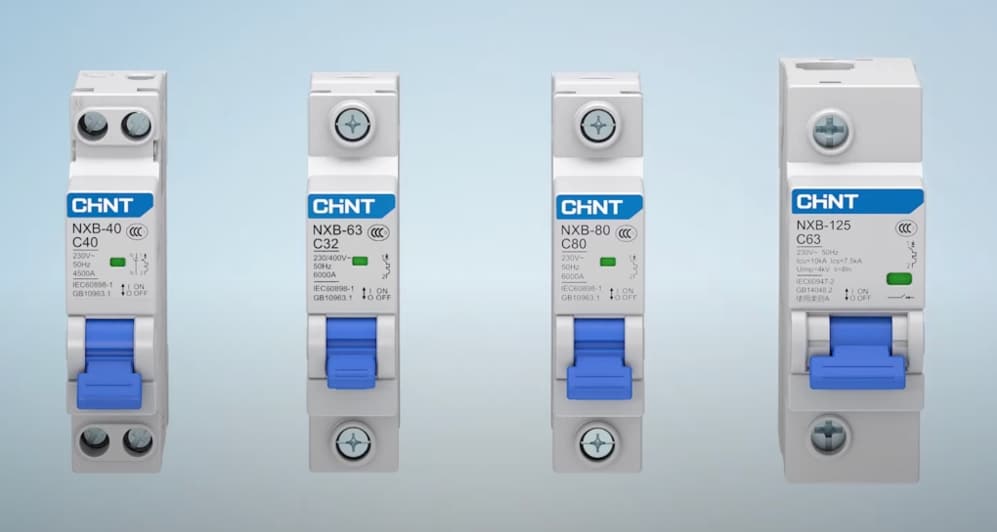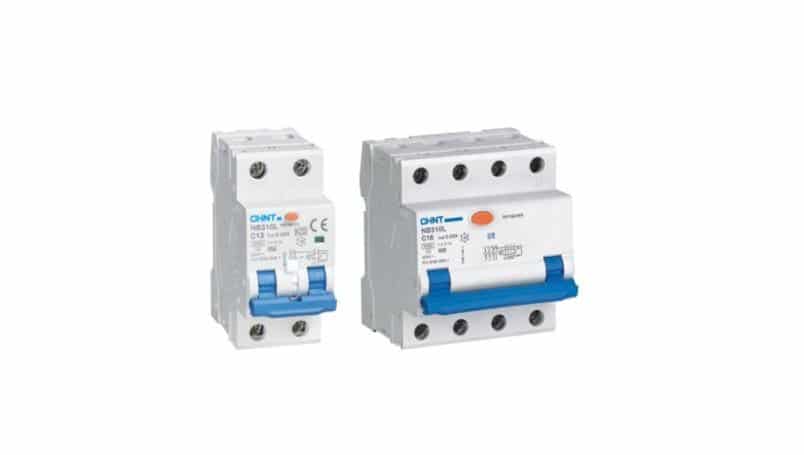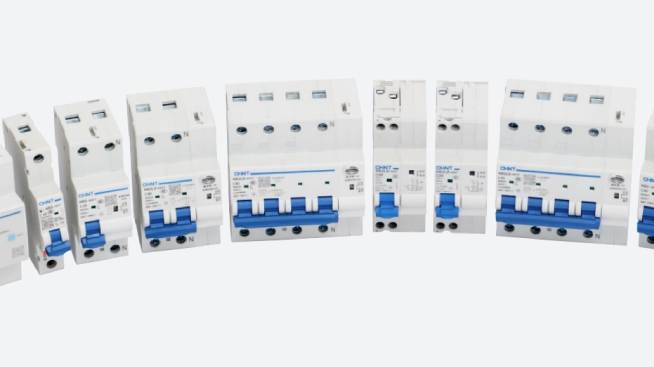Table of Contents |
MCB and RCCB are the two most common circuit breakers used in homes to protect against the risk of electrical overload. MCB stands for Miniature Circuit Breaker, and RCCB stands for Residual Current Circuit Breaker. While both provide a level of protection that is essential for safety and reliability, they each have their own advantages and drawbacks.
In this guide, we’ll explore the differences between MCB and RCCB, as well as which one may be best suited for your home.
What is a MCB?
MCB, or miniature circuit breaker, is an electromechanical device commonly used in commercial and residential wiring. This circuit breaker helps prevent damage to the rest of your electrical system, mainly when an excessive current occurs due to a short circuit.
For instance, if a short circuit occurs in a device, like an appliance or lighting system, the MCB will quickly turn off the power supply to prevent further damage. An MCB also provides protection during a sudden voltage fluctuation, which can occur due to lightning strikes or other extreme weather conditions.
MCBs are one of the simplest circuit breakers that operate on a very straightforward principle known as short-circuiting or overload protection. It’s comprised of two contacts, one is completely fixed, and the other is movable. When a current increases beyond a safe point, the movable contact will shift away from the fixed contact. This creates an open circuit that entirely disconnects the main power supply from the circuit.
MCBs are suitable for most residential and commercial applications. They’re typically used to protect several circuits at once, with each circuit having its own breaker. This helps ensure complete safety in case of a short-circuit or overload on any single circuit, as it will only affect the corresponding breaker and not the entirety of the wiring system.
What is a RCCB?
Residual Current Circuit Breaker (RCCB) can also be referred to as an RCB or RCD circuit breaker. This is a residual current protection device that is responsible for monitoring the electrical current in the main and neutral lines of both residential and commercial buildings.
The RCCBs main job is to prevent electrical shock and potential electrical fires due to faulty electrical wiring. Whenever it senses that the return flow in the neutral line is not equal to the current in the main line, it will interrupt the circuit. This type of circuit breaker works very quickly, only taking about 20 milliseconds to trip.
For instance, if an appliance has a faulty wire and is leaking current, the RCCB will disconnect the power before any damage can be caused. Additionally, this circuit breaker is especially helpful for ensuring that no electrical shocks will occur in wet areas such as bathrooms and kitchens.
RCCBs are slightly more expensive than MCBs, but they provide a higher level of safety and reliability. RCCBs are essential for workplaces where people may come in contact with live electrical wires, such as construction sites or factories. They’re also suitable for homes that are built near water sources, as the added protection helps prevent any potential shocks from occurring.
Top 5 Differences Between MCB and RCCB
Comparing MCBs and RCCBs is a great way to gain a deeper understanding of circuit-breaking devices. To help you understand how to best utilize and maximize the use of each safety device in your domestic or working environment, here are five main differences between an MCB and an RCCB.
Installation
Generally, MCBs are much easier to install than RCCBs. MCBs are equipped with a simple power switch that can be quickly connected to the main circuit. On the other hand, RCCBs require slightly more intricate installation and wiring due to their built-in earth leakage protection system.
Protection
MCBs are specifically designed to protect against overcurrent and short circuits. RCCBs, on the other hand, are designed to protect against earth leakage and electrical shock.
Sensitivity
MCBs are not as sensitive to current fluctuations and can take a few milliseconds to trip. RCCBs are more sensitive and react faster, tripping within 20 milliseconds.
Number of Poles
MCBs are available in single-pole, two-pole, and four-pole systems. RCCBs are typically only available in double-pole and four-pole systems.
Rating
MCBs are rated between 6A to 125A. RCCBs have rated current trip sensitivities of 300mA, 100mA, 30mA, and 10mA.
Our NXB-40 Miniature Circuit Breaker, for example, has a rated current of 6A, 10A, 16A, 20A, 25A, 32A, and 40A. On the other hand, our NXB-125G Miniature circuit breaker has a rated current of 63A, 80A, 100A(1P, 2P, 3P, 4P), 125A(1P, 2P).
MCB and RCCB Connection
The MCB and RCCB are installed in a specific series to prevent short circuits and electrical shock. All phase and neutral wires from your power supply should be routed into your MCB first and then your RCCB. This helps to ensure that your MCB can adequately detect any short circuits and overloads coming in your lines or the lines between the MCB and RCCB.
By having your RCCB between the MCB and load, you can ensure that it stays effective in preventing electrical shock and fire hazards. It’s important to note that installing your RCCB.
When MCB is Connected Before RCCB
It is important to note that when an MCB is connected before the RCCB, it will not provide any additional protection against earth leakage. When an overload is detected on the load side, your MCB will quickly trip. This occurs due to a high electrical current pushing the moveable contact away from its permanent partner. Furthermore, should there be any fault between both components (MCB and RCCB), then immediately, the circuit will break as a consequence of that detection.
When MCB is Connected After RCCB
If the MCB is connected after the RCCB, it will fail to recognize an overload. Additionally, it will fail to detect any overload between the RCCB and MCB. Therefore, it’s always recommended that the MCB be installed before the RCCB.
MCB and RCCB Connection Diagram
With a quick examination of the diagram above, it becomes evident that the MCB needs to be the first part of the connection series. The incoming power supply phase and neutral wires must be adequately connected to the MCB. The MCB will have clearly labeled entrances for both lines, so you know which wire goes where.
Next, both phase and neutral wires need to be run to the RCCB. Your RCCB will also be adequately labeled for easy wire installation. Lastly, phase and neutral wires will need to be run to the load. This provides two stages of protection against overloads and short-circuiting, as well as electrical shocks and fires.
To ensure that your home or office can utilize electricity safely, you must install both MCBs and RCCBs. This dual combination installed in the correct order will provide protection against short circuits, overloads, electrical shock, and fire hazards.
Conclusion
MCBs and RCCBs are both essential components for providing electrical safety in your home or office. It’s important to understand the differences between these two devices, as well as how they need to be installed in order to effectively protect against short circuits, overloads, electrical shocks, and fire hazards.
Installing your MCB before your RCCB is the best way to ensure that both devices work as intended. With this knowledge, you can rest assured knowing that you and your family are protected against any electrical hazards.
If you’re interested in obtaining effective MCBs and RCCBs, or you would like to explore more about them, be sure to visit ChintGlobal.com today!





 What is a
What is a 
.png)








